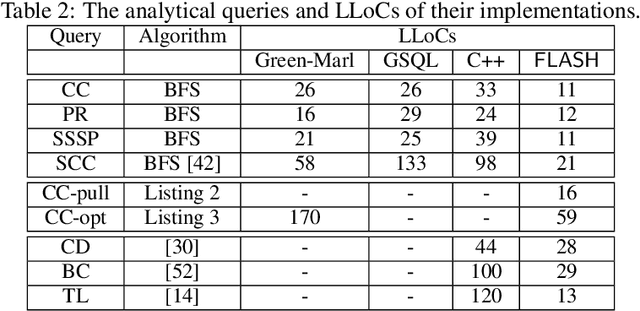Lu Qin
Towards Fair and Rigorous Evaluations: Hyperparameter Optimization for Top-N Recommendation Task with Implicit Feedback
Aug 14, 2024Abstract:The widespread use of the internet has led to an overwhelming amount of data, which has resulted in the problem of information overload. Recommender systems have emerged as a solution to this problem by providing personalized recommendations to users based on their preferences and historical data. However, as recommendation models become increasingly complex, finding the best hyperparameter combination for different models has become a challenge. The high-dimensional hyperparameter search space poses numerous challenges for researchers, and failure to disclose hyperparameter settings may impede the reproducibility of research results. In this paper, we investigate the Top-N implicit recommendation problem and focus on optimizing the benchmark recommendation algorithm commonly used in comparative experiments using hyperparameter optimization algorithms. We propose a research methodology that follows the principles of a fair comparison, employing seven types of hyperparameter search algorithms to fine-tune six common recommendation algorithms on three datasets. We have identified the most suitable hyperparameter search algorithms for various recommendation algorithms on different types of datasets as a reference for later study. This study contributes to algorithmic research in recommender systems based on hyperparameter optimization, providing a fair basis for comparison.
Reinforcement Learning Based Query Vertex Ordering Model for Subgraph Matching
Jan 25, 2022



Abstract:Subgraph matching is a fundamental problem in various fields that use graph structured data. Subgraph matching algorithms enumerate all isomorphic embeddings of a query graph q in a data graph G. An important branch of matching algorithms exploit the backtracking search approach which recursively extends intermediate results following a matching order of query vertices. It has been shown that the matching order plays a critical role in time efficiency of these backtracking based subgraph matching algorithms. In recent years, many advanced techniques for query vertex ordering (i.e., matching order generation) have been proposed to reduce the unpromising intermediate results according to the preset heuristic rules. In this paper, for the first time we apply the Reinforcement Learning (RL) and Graph Neural Networks (GNNs) techniques to generate the high-quality matching order for subgraph matching algorithms. Instead of using the fixed heuristics to generate the matching order, our model could capture and make full use of the graph information, and thus determine the query vertex order with the adaptive learning-based rule that could significantly reduces the number of redundant enumerations. With the help of the reinforcement learning framework, our model is able to consider the long-term benefits rather than only consider the local information at current ordering step.Extensive experiments on six real-life data graphs demonstrate that our proposed matching order generation technique could reduce up to two orders of magnitude of query processing time compared to the state-of-the-art algorithms.
GoGNN: Graph of Graphs Neural Network for Predicting Structured Entity Interactions
May 12, 2020



Abstract:Entity interaction prediction is essential in many important applications such as chemistry, biology, material science, and medical science. The problem becomes quite challenging when each entity is represented by a complex structure, namely structured entity, because two types of graphs are involved: local graphs for structured entities and a global graph to capture the interactions between structured entities. We observe that existing works on structured entity interaction prediction cannot properly exploit the unique graph of graphs model. In this paper, we propose a Graph of Graphs Neural Network, namely GoGNN, which extracts the features in both structured entity graphs and the entity interaction graph in a hierarchical way. We also propose the dual-attention mechanism that enables the model to preserve the neighbor importance in both levels of graphs. Extensive experiments on real-world datasets show that GoGNN outperforms the state-of-the-art methods on two representative structured entity interaction prediction tasks: chemical-chemical interaction prediction and drug-drug interaction prediction. Our code is available at Github.
Taming the Expressiveness and Programmability of Graph Analytical Queries
Apr 20, 2020



Abstract:Graph database has enjoyed a boom in the last decade, and graph queries accordingly gain a lot of attentions from both the academia and industry. We focus on analytical queries in this paper. While analyzing existing domain-specific languages (DSLs) for analytical queries regarding the perspectives of completeness, expressiveness and programmability, we find out that none of existing work has achieved a satisfactory coverage of these perspectives. Motivated by this, we propose the \flash DSL, which is named after the three primitive operators Filter, LocAl and PuSH. We prove that \flash is Turing complete (completeness), and show that it achieves both good expressiveness and programmability for analytical queries. We provide an implementation of \flash based on code generation, and compare it with native C++ codes and existing DSL using representative queries. The experiment results demonstrate \flash's expressiveness, and its capability of programming complex algorithms that achieve satisfactory runtime.
Binarized Graph Neural Network
Apr 19, 2020



Abstract:Recently, there have been some breakthroughs in graph analysis by applying the graph neural networks (GNNs) following a neighborhood aggregation scheme, which demonstrate outstanding performance in many tasks. However, we observe that the parameters of the network and the embedding of nodes are represented in real-valued matrices in existing GNN-based graph embedding approaches which may limit the efficiency and scalability of these models. It is well-known that binary vector is usually much more space and time efficient than the real-valued vector. This motivates us to develop a binarized graph neural network to learn the binary representations of the nodes with binary network parameters following the GNN-based paradigm. Our proposed method can be seamlessly integrated into the existing GNN-based embedding approaches to binarize the model parameters and learn the compact embedding. Extensive experiments indicate that the proposed binarized graph neural network, namely BGN, is orders of magnitude more efficient in terms of both time and space while matching the state-of-the-art performance.
 Add to Chrome
Add to Chrome Add to Firefox
Add to Firefox Add to Edge
Add to Edge